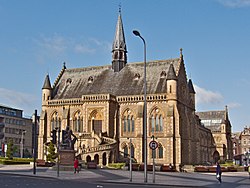
The Victoria and Albert Museum in London is the world's largest museum of applied arts, decorative arts, and design, housing a permanent collection of over 2.27 million objects. It was founded in 1852 and named after Queen Victoria and Prince Albert.

The Science Museum is a major museum on Exhibition Road in South Kensington, London. It was founded in 1857 and to date is one of the city's major tourist attractions, attracting 3.3 million visitors annually.
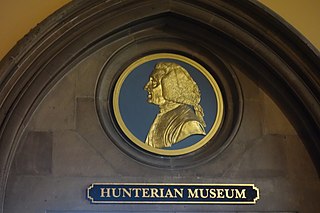
The University of Glasgow's museum dedicated to William Hunter is the oldest museum in Scotland. It covers the Hunterian Museum, the Hunterian Art Gallery, the Mackintosh House, the Zoology Museum and the Anatomy Museum, all located in various buildings on the main campus of the University in the west end of Glasgow.

The National Gallery of Canada, located in the capital city of Ottawa, Ontario, is Canada's national art museum. The museum's building takes up 46,621 square metres (501,820 sq ft), with 12,400 square metres (133,000 sq ft) of space used for exhibiting art. It is one of the largest art museums in North America by exhibition space.
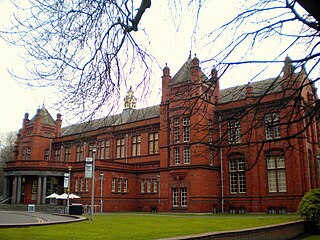
The Whitworth is an art gallery in Manchester, England, containing about 55,000 items in its collection. The gallery is located in Whitworth Park and is part of the University of Manchester.

The Scottish National Portrait Gallery is an art museum on Queen Street, Edinburgh. The gallery holds the national collections of portraits, all of which are of, but not necessarily by, Scots. It also holds the Scottish National Photography Collection.

William Burges was an English architect and designer. Among the greatest of the Victorian art-architects, he sought in his work to escape from both nineteenth-century industrialisation and the Neoclassical architectural style and re-establish the architectural and social values of a utopian medieval England. Burges stands within the tradition of the Gothic Revival, his works echoing those of the Pre-Raphaelites and heralding those of the Arts and Crafts movement.

Stirling Smith Art Gallery and Museum is an institution based in Stirling, Central Scotland, dedicated to the promotion of cultural and historical heritage and the arts, from a local scale to nationally and beyond. It is also known locally by its original name of "The Smith Institute".
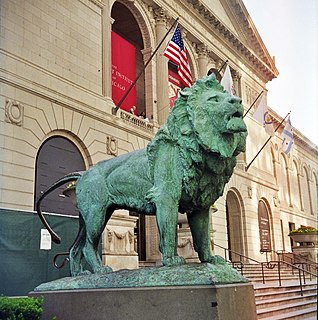
The Art Institute of Chicago in Chicago's Grant Park, founded in 1879, is one of the oldest and largest art museums in the United States. Recognized for its curatorial efforts and popularity among visitors, the museum hosts approximately 1.5 million people annually. Its collection, stewarded by 11 curatorial departments, is encyclopedic, and includes iconic works such as Georges Seurat's A Sunday on La Grande Jatte, Pablo Picasso's The Old Guitarist, Edward Hopper's Nighthawks, and Grant Wood's American Gothic. Its permanent collection of nearly 300,000 works of art is augmented by more than 30 special exhibitions mounted yearly that illuminate aspects of the collection and present cutting-edge curatorial and scientific research.

Duncan of Jordanstone College of Art & Design (DJCAD) is part of the University of Dundee in Dundee, Scotland. It is ranked as one of the top schools of art and design in the United Kingdom.

The Albany Institute of History & Art (AIHA) is a museum in Albany, New York, United States, "dedicated to collecting, preserving, interpreting and promoting interest in the history, art, and culture of Albany and the Upper Hudson Valley region". It is located on Washington Avenue in downtown Albany. Founded in 1791, it is among the oldest museums in the United States.
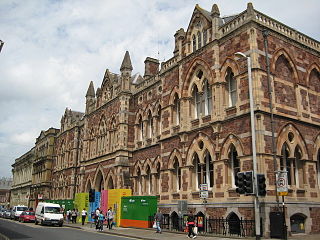
Royal Albert Memorial Museum & Art Gallery (RAMM) is a museum and art gallery in Exeter, Devon, the largest in the city. It holds significant and diverse collections in areas such as zoology, anthropology, fine art, local and overseas archaeology, and geology. Altogether the museum holds over one million objects, of which a small percentage is on permanent public display. It is a 'Major Partner Museum' (MPM) under the Arts Council England administered programme of strategic investment, which means RAMM receives funding (2012–15) to develop its services. RAMM receives this funding in partnership with Plymouth City Museum & Art Gallery. Previously they were described as 'hub museums' under the 'Renaissance' Programme for regional museums which operated between 2002–11 and funded by the now defunct Museums Libraries & Archives Council (MLA).

The Heide Museum of Modern Art, also known as Heide, is an art museum in Bulleen, a suburb of Melbourne, Victoria, Australia. Established in 1981, the museum houses modern and contemporary art across three distinct exhibition buildings and is set within sixteen acres of heritage-listed gardens and a sculpture park.

Cliffe Castle Museum, Keighley, West Yorkshire, England, is a local heritage museum which opened in the grand, Victorian, neo-Gothic Cliffe Castle in 1959. Originating as Cliffe Hall in 1828, the museum is the successor to Keighley Museum which opened in Eastwood House, Keighley, in c. 1892. There is a series of galleries dedicated to various aspects of local heritage, and to displaying the house itself, which is a Grade II listed building. Entrance to the museum is free of charge.
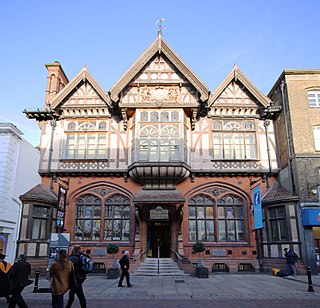
The Beaney House of Art and Knowledge is the central museum, library and art gallery of the city of Canterbury, Kent, England. It is housed in a Grade II listed building. Until it closed for refurbishment in 2009, it was known as the Beaney Institute or the Royal Museum and Art Gallery. It reopened under its new name in September 2012. The building, museum and art gallery are owned and managed by Canterbury City Council; Kent County Council is the library authority. These authorities work in partnership with stakeholders and funders.

Page\Park Architects was established in 1981 by David Page and Brian Park and has developed as one of Scotland's best known practices undertaking work over a range of sectors.
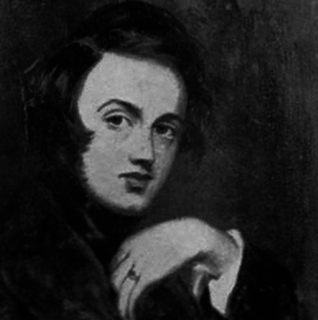
Thomas Musgrave Joy was a British portraitist.

Bruce James Talbert was a Scottish architect, interior designer and author, best known for his furniture designs.

The Watt Library or Watt Monument Library in Greenock, Scotland, opened on its current site in 1837 and was the direct descendant of the Greenock Library, a subscription library founded in 1783. It closed as a subscription library in 1971 and re-opened as a public facility in 1973 under the name of the Watt Library, specialising in Local History and Archives. The building was designed in the Gothic revival style by architect Sir Edward Blore and is a listed building. It has undergone recent refurbishment and re-opened in November 2019 as the Watt Institution, incorporating the McLean Museum Watt Lecture Hall and Inverclyde Archives.

Inverness Town House is a municipal building in the High Street, Inverness, Scotland. The town hall, which was the headquarters of Inverness Burgh Council, is a Category A listed building.
